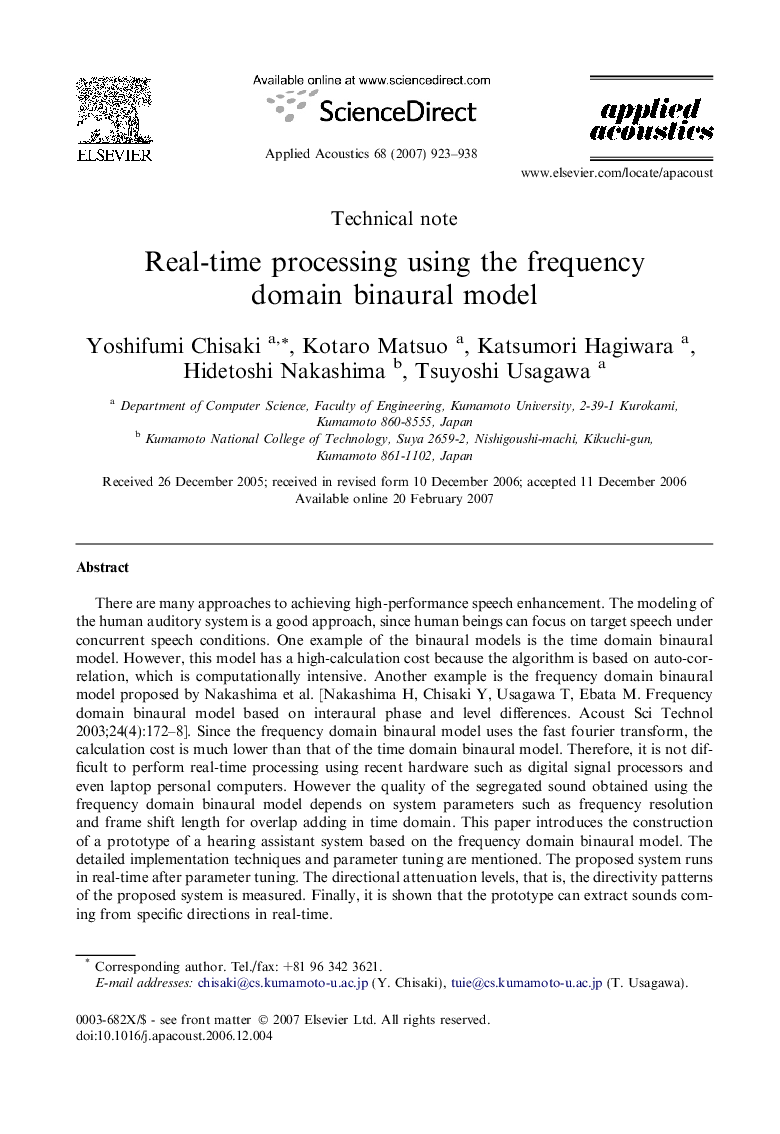| Article ID | Journal | Published Year | Pages | File Type |
|---|---|---|---|---|
| 755497 | Applied Acoustics | 2007 | 16 Pages |
There are many approaches to achieving high-performance speech enhancement. The modeling of the human auditory system is a good approach, since human beings can focus on target speech under concurrent speech conditions. One example of the binaural models is the time domain binaural model. However, this model has a high-calculation cost because the algorithm is based on auto-correlation, which is computationally intensive. Another example is the frequency domain binaural model proposed by Nakashima et al. [Nakashima H, Chisaki Y, Usagawa T, Ebata M. Frequency domain binaural model based on interaural phase and level differences. Acoust Sci Technol 2003;24(4):172–8]. Since the frequency domain binaural model uses the fast fourier transform, the calculation cost is much lower than that of the time domain binaural model. Therefore, it is not difficult to perform real-time processing using recent hardware such as digital signal processors and even laptop personal computers. However the quality of the segregated sound obtained using the frequency domain binaural model depends on system parameters such as frequency resolution and frame shift length for overlap adding in time domain. This paper introduces the construction of a prototype of a hearing assistant system based on the frequency domain binaural model. The detailed implementation techniques and parameter tuning are mentioned. The proposed system runs in real-time after parameter tuning. The directional attenuation levels, that is, the directivity patterns of the proposed system is measured. Finally, it is shown that the prototype can extract sounds coming from specific directions in real-time.
